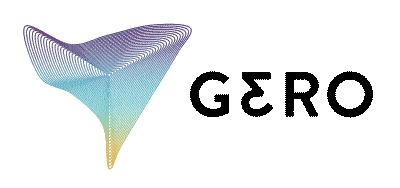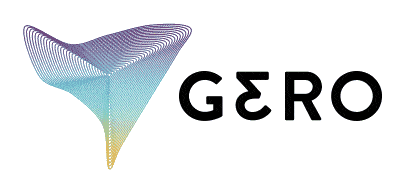
Any question about our company, a partnership, or job opportunities?
Please complete our contact form and we will get in touch ASAP
By clicking submit below, you consent to allow Gero to store and process the personal information submitted above to provide you the content requested.
From Genetics Into Clinic
Curing complex diseases is hard – most drug candidates fail late and in the most expensive way possible
This happens because living organisms are complex and correlated systems, which are very hard to reverse engineer.
Most diseases can not be easily reduced to a malfunction of a single gene or system that is targetable by a specific drug and which universally drives the disease both in humans and in a mouse model.
Most diseases can not be easily reduced to a malfunction of a single gene or system that is targetable by a specific drug and which universally drives the disease both in humans and in a mouse model.
Lack of efficacy is the main problem
Safety
Efficacy
Strategy
PK/PD
82%
9%
6%
3%
PRECLINICAL
PHASE
PHASE IIa
PHASE IIIb
62%
15%
15%
8%
35%
57%
8%
12%
88%


Projects with human genetic linkage of the target to the disease indication
New era of translational genomics:
The genetic link between target and disease increases the chances of passing the Phase II clinical trial almost in twice
The genetic link between target and disease increases the chances of passing the Phase II clinical trial almost in twice
YES
NO
27%
73%
57%
43%
Closed
Active or successful


Genetic data is breaking the Eroom's law
But all of the low hanging fruits are picked. Monogenic diseases will be extinguished by genetic therapies. Most of us will suffer from much more prevalent and lucrative complex diseases, those that are not caused by a single gene.
What direction is ahead of us? GERO.AI platform is designed to meet the challenge

2050
2020
2000
1940
0.1
1
10
100
By 2018, 0,7 more NMEs per billion US$ R&D spending
Eroom’s Law published with data up to 2010
Number of approved drugs per billion US$ R&D spending
Natural selection runs clinical trials some mutations in our genome significantly affect our health
People with different mutation patterns are exposed to stresses and diseases. Some of them are more likely to survive, for example, a Coronary Heart Disease (CHD).
In 2003 a gain-of-function mutation in the PCSK9 gene was found to be associated with Familial Hypercholesterolemia.
By the year 2020, Pharma successfully translated this discovery into a billion-dollar market for PCSK9 inhibitors per year.
PCSK9 gene inhibitors case demonstrates how we can identify a significant to health mutation to treat a disease.
In 2003 a gain-of-function mutation in the PCSK9 gene was found to be associated with Familial Hypercholesterolemia.
By the year 2020, Pharma successfully translated this discovery into a billion-dollar market for PCSK9 inhibitors per year.
PCSK9 gene inhibitors case demonstrates how we can identify a significant to health mutation to treat a disease.
Billion-dollar drugs — suppression of the PCSK9 gene product results in protection against cardiovascular disease — were found in a little drop of the genetic ocean
The discovery was made by looking into COMMON GENE VARIANTS (FREQUENT MUTATIONS or SNPs) — which “cover” a little drop — only 0,5% of the whole genome length and are mostly responsible for hair and eye color, height, ancestry.
How many drugs are there in undiscovered waters?
WHOLE-EXOME (and eventually GENOME) SEQUENCING reveal rare mutations, with our technology we can discover ideas for drugs in the remaining 99.5% of the genetic.
WHOLE-EXOME (and eventually GENOME) SEQUENCING reveal rare mutations, with our technology we can discover ideas for drugs in the remaining 99.5% of the genetic.


Rare mutations have stronger effects on human health
Suggests drugs imitating (or inhibiting) the effect of the mutation to treat the disease
COMMON GENE VARIANTS (frequent mutations or SNPs) are almost always about your ancestry, eye color, etc. but rarely about your health.
During World War 2 the people from statistical department in the US Navy were asked to look at the airplanes to understand which parts of airframes to be reinforced.
The naive idea would be to look at the places where are many holes to see if airplanes needs to be reinforced there.
During World War 2 the people from statistical department in the US Navy were asked to look at the airplanes to understand which parts of airframes to be reinforced.
The naive idea would be to look at the places where are many holes to see if airplanes needs to be reinforced there.
Identifies rare mutations significantly affecting a complex disease from real-world data
SOLUTION: GERO.AI

Obviously, this is a mistake because reinforced should be the places there are no holes because if there is a hit there the airplane would go down immediately and not come back from the mission at all. The same happens in our genome
We have a bombardment of mutations and the places where mutations are allowed to happen (common variants) are exactly the places where is no effect on your health (positive or negative) so those places are not that important.
And the opposite is true - there are places where you rarely or never see mutations because these are the places where genes related to function occurs.
We have a bombardment of mutations and the places where mutations are allowed to happen (common variants) are exactly the places where is no effect on your health (positive or negative) so those places are not that important.
And the opposite is true - there are places where you rarely or never see mutations because these are the places where genes related to function occurs.
+
GERO.AI identifies rare mutations that sufficiently affect human health from real-world big clinical and genetic (WES) and molecular data and then suggests druggable targets and drugs (mimicking or inhibiting) the effect of the mutation treat the disease. We can aggregate the effects of multiple rare mutations on the level of biological processes (or pathways) and give you numerous choices of interventions with the required effect.
Gero were the first, but we are not the only ones
Other AI/ML teams will also make sense out of this data, may be in a few years. The reason why we were able to build GERO.AI two years ahead of the competition is our in-house aging research.
We were looking for a drug targeting senescence, so even the first 50,000 whole-exomes released two years ago were enough for us to get statistical power as soon as every one of those 50,000 people was exposed to aging.
That allowed us to work on this AI for almost two years ahead and refine our methods. When additional 150,000 WES were released in November 2020, we successfully cross-validated our predictions.
That allowed us to work on this AI for almost two years ahead and refine our methods. When additional 150,000 WES were released in November 2020, we successfully cross-validated our predictions.
2018
AI/ML research and model trainig
50,000 WES released and used by GERO for aging research
2019
2020
2021
2022
2023
2024
2025

Drug Development
200,000 WES released, which enables target ID for “less prevalent” diseases and conditions but still only with dimensionality reduction in place
AI/ML research and model trainig
Other AI/ML teams
Drug Development


GERO.AI is validated in mice
For the first time in history, systemic rejuvenation is achieved by the MoA predicted by AI
In the lab of one of the world's most recognized aging researchers Brian Kennedy, we demonstrated outstanding results.
"
GERO.AI has successfully identified and validated a human target for treating senescence-associated disorders and aging


GERO.AI proved itself in our in-house drug discovery program in senescence associated diseases in-vivo
We achieved systemic rejuvenation in experiments with 100-weeks old animals by intervention vs. protein predicted by the AI.

Time (days)
20
100
180
IMPROVED SURVIVAL

60
40
140
60
80
100
GERO.AI
Rapamycin
Control
golden standard for mice life extension
Enhanced longevity came along with functional and histological improvements
We will take a specific binder to the identified target into preclinical studies
Reduced frailty index
4
2
6
8
Control
Rapamycin
Antibody
P=0,006
P=0,008
Frailty at week 120
40
20
60
80
Control
Rapamycin
Antibody
CD3 p16
70
65
30
Reduced senescent cell burden
0,5
1
1,5
Control
Rapamycin
Antibody
Relative value of PSD95/ β-actin
1
1,38
1,5
Improved synaptic plasticity
~10% CHF patients die within 0.5 years
GERO.AI identifies the pathway activation signatures of low risk through the effects of rare mutations in Whole-Exome sequencing data
GERO.AI identifies the pathway activation signatures of low risk through the effects of rare mutations in Whole-Exome sequencing data
Survival CHF, 2 years window
KM_estimate
Case study: Congestive Heart Failure (CHF)
Drugs scored high by GERO.AI have better chances to show efficacy in clinical trials

0.825
0.850
0.875
0.900
0.925
0.950
0.975
1.000
0.5
1.0
1.5
2.0
Heart failure
Cardiovascular disease
Trial phase I/II
Trial phase III/IV
0.4
0.5
0.6
Enrichment
*p=0.02
*p=0.01
Despite the fact that UK Biobank provides only a few thousands of CHF cases, the pathway aggregation allows us to produce a sufficiently powerful model suggesting a few novel mechanisms of action.
To test the hypothesis fast, we can propose existing drugs for Proof of Concept and then initiate drug discovery.
Despite the fact that UK Biobank provides only a few thousands of CHF cases, the pathway aggregation allows us to produce a sufficiently powerful model suggesting a few novel mechanisms of action.
To test the hypothesis fast, we can propose existing drugs for Proof of Concept and then initiate drug discovery.



